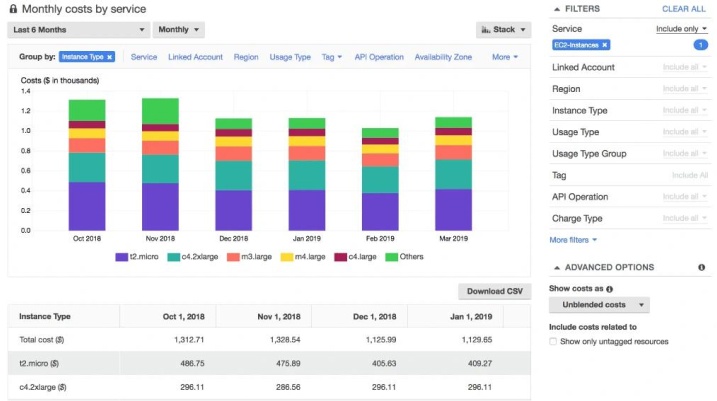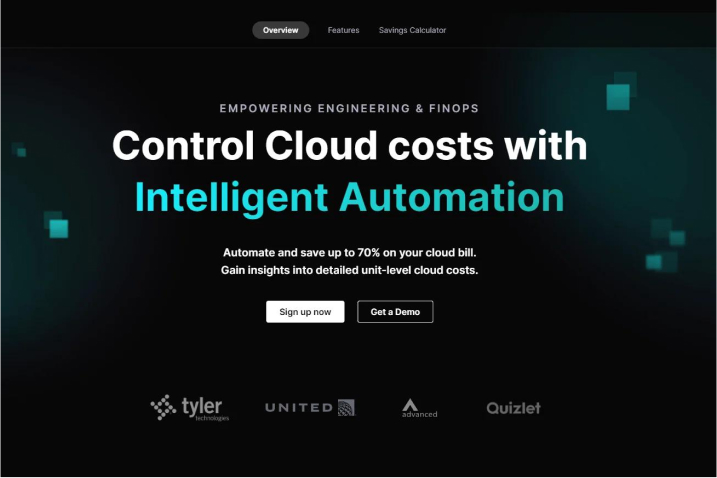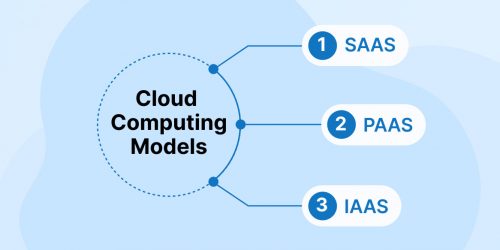Related Blogs

Key Takeaways
- Understanding Cloud Cost Optimization: Know the best practices to reduce cloud costs while maintaining the app security and performance.
- Implementing Best Practices: Adhering to the methods for efficient resource utilization and cost optimization.
- Budget Planning: Track your expenses and formulate a plan that pays bills on time and has enough funds for emergencies to ensure financial stability.
- Utilizing Cost Management Tools: Use cost management tools like Azure to track expenses and identify resource inefficiencies.
- Improving Performance and Efficiency: Know how to use fewer resources for the same amount of work or get more things done within a given timeline.
Are you looking to reduce your cloud costs?
Do you want to know where exactly your cloud expenses are going?
Do you want to make the most of your cloud resources?
If you have a single or multiple objectives mentioned above then you need to leverage cloud cost optimization techniques. It provides the solution to all your problems related to cloud costs and resource usage. You can either implement the best practices mentioned in the article to make your existing system cost-efficient or collaborate with a top software development company to design a new one from scratch. They can help you keep the costs of your cloud resources within your budget while maintaining their performance. So let’s get started.
1. What is Cloud Cost Optimization?
Cloud cost optimization includes cutting down inefficiencies in the cloud environment. It includes eliminating unused instances, cutting down over-provisioned resources, and ensuring that all costs related to the cloud environment are appropriate. In short, it balances the cost with the requirements such as security and performance.
To optimize cloud costs, it’s essential to have domain knowledge and identify the operational metrics, along with the performance thresholds for each workload. Remember, this process is dynamic as the app or cloud requirements can change over time.
Therefore, your cloud cost optimization must also adapt and evolve with these changing circumstances. You can use automated tools to keep an eye on the important metrics, provide you with regular reports, and offer smart suggestions.
2. Best Practices for Cloud Cost Optimization
To ensure that cloud costs don’t become a burden for your organization, ensure that you have proper purchasing and implementation policies. It is best to adhere to best practices when you embed cloud resources into your workflow to maximize their benefits.
2.1 Budget Planning
It is easier to plan for cloud expenditures as they include pay-per-usage-based monthly subscriptions than on-premise IT costs that require high and unknown up-front investments. Once you understand the cloud billing and cloud usage patterns, you can plan a monthly budget for your cloud computing strategy.
Remember, the budget may need adjustments with the varying organizational needs and monthly usage. Still, it is beneficial to have a planned budget for overall cloud and optimized costs.
2.2 Proactively Rightsize the Cloud Computing Resources
You have to use cloud cost optimization tools to analyze the performance metrics and usage patterns of each workload and application. This allows you to identify the underutilized cloud resources. For cost efficiency, usage, or rightsizing, you can then modify the workloads appropriately.
Use the rightsizing tool to notify you whenever costs exceed a predefined percentage within a predetermined period. These tools can be easily configured to automatically terminate unutilized assets after that period to optimize the cloud costs. If you have the right tool by your side, you can also automate the entire rightsizing process.
2.3 Identify and Eliminate Idle Resources
Sometimes you forget to turn off unused resources, leading to unnecessary costs. On top of that, if you don’t remove the storage of resources that are turned off or not used anymore, it would hinder the performance of your system and incur extra storage charges.
To ensure that you aren’t paying for unused resources, monitor your cloud for resource utilization and performance bottlenecks. Additionally, you can scan your cloud service bills to check for the charges related to services you no longer use. Identifying and eliminating idle resources not only helps optimize cost but also improves overall performance.
2.4 Optimizing Software License Costs
You must consider the software licenses and subscription costs when planning your budget. After all, they represent a significant part of your cloud system expenses. There are two ways to deploy; through the service marketplace and handling it manually.
There is a risk of paying for unused software licenses in manual handling and it can be overwhelming. Instead, you can find commercial or public service marketplaces to manage them for you. Trimming unnecessary costs of software licenses helps you optimize your total cloud costs.
2.5 Release Idle Elastic IP Addresses
Many cloud service providers allot multiple IP addresses to users by default as a part of their package. However, this package includes a charge for each of them. For example, every AWS account provides five elastic IP addresses per region.
The reason behind this is to make the software and instances available to the users even in the failures. However, the cloud providers would charge users for all five IP addresses even if they are not in use. Therefore, if you want to reduce your cloud expenses, identify the unused IP addresses and turn them off using appropriate tools.
2.6 Set Automated Alerts
You can use cost management tools to keep an eye on resource usage and costs. This helps you identify the overspending or cost anomalies. You can set alerts to get notifications about such instances.
These tools allow you to easily identify and address cost drivers, anomalies, and trends before the expenditures get out of hand. They help analyze the root cause and address it to prevent unexpected costs. This enables you to keep your project expenses within the budget.
Moreover, cloud cost management tools leverage heat maps to visualize demand fluctuations, helping identify and shut down unnecessary services to save costs. Empowered by ML algorithms, these tools can easily detect unusual patterns and notify users about overuse or unexpected expenses.
2.7 Evaluate Different Compute Instance Types
Cloud providers offer different types of compute instances like dedicated, spot, reserved, and on-demand instances. Selecting the right instance type can accommodate your cost and performance requirements. To make that decision, you must understand these options and evaluate them against your needs to ensure long-term benefits.
- Dedicated Instances: These run on your hardware and are dedicated to a specific user or single customer.
- Spot Instances: You can access unused capacity but its price varies based on demand.
- Reserved Instances: Allows you to reserve an instance for a fixed period or long-term deployment that needs consistent performance.
- On-demand Instance: You pay an hourly rate when your instance is running.
2.8 Implement a Cloud-Native Design
Another cloud cost optimization best practice is to replace your current cloud system with a more cost-efficient one. For instance, you can implement a cloud-native design with auto-scaling capabilities. This helps ensure that you pay only for the servers you use.
You can also leverage the documentation and expert guidance from your cloud service providers to design a cost-effective cloud native system.
However, it is important to note that developing cloud-native design needs a specific skill set. Many businesses tend to modify their existing systems rather than design a new one from scratch. Whatever option you choose, ensure it’s cost-optimized and aligns well with the performance and other requirements.
3. Why do You Need Cloud Cost Optimization?
The objective of cost control indeed is to optimize the costs of cloud resources. However, it also allows you to address the cloud performance and security challenges. Some of the reasons why you should consider cloud cost optimization are:
3.1 Higher Cost Savings
The primary reason why you should implement cloud cost optimization is to save money. Developing and maintaining cloud resources can be expensive.
By implementing cloud cost optimization best practices and policies, you can help your teams achieve the most of the available resources, foster a culture of cost awareness, and get better value for any cloud spending. With this, your company can make all the cloud purchasing decisions on solid data instead of going on a guesswork.
3.2 Better Value for Money
Cloud cost optimization ensures that you are paying only for the resources you are using. It involves analyzing the usage and then managing them based on the results to avoid underutilization and over-provisioning.
3.3 Improved Business Agility
A cost-efficient system allows you to scale operations without incurring any hefty expenses. A cost-efficient cloud system doesn’t weigh you down, rather it allows you to explore new arenas that can help your business grow or deliver a better customer experience.
3.4 Improved Efficiency
Under-used, idle, mismanaged, or poorly optimized cloud resources can increase the cost of your cloud operations significantly. With proper auto-scaling and rightsizing tools, you can identify these under-used or over-provisioned resources to save costs. Optimizing these resources also helps enhance the overall efficiency of your cloud system.
3.5 Enhanced Performance
With cloud cost optimization, you not only understand your requirements but also the various types of resources available to fulfill them. This allows you to select the most suitable option, guaranteeing better performance.
In an existing system, cloud cost optimization helps you understand each workload and its distinct requirements. Moreover, the tools help you monitor the operational metrics to determine the performance thresholds for every resource, resulting in enhanced performance, faster processing time, and an improved user experience.
3.6 Reduced Security Risks
Cloud cost optimization enables you to monitor resource usage and track anomalies within the system. This capability helps identify potential security threats. Cloud Cost optimization tools are often empowered with machine learning algorithms that are specially created to detect unusual patterns in the environment.
They also allow you to automate cloud provisioning, which helps enforce security controls and reduce the risks of misconfiguration.
4. Most Popular Cloud Cost Management Tools
This section discusses the most widely used cloud cost management tools in the market. Many developers and businesses prefer them to understand, reduce, and optimize cloud costs.
4.1 Amazon CloudWatch

Amazon CloudWatch is an AWS native tool used to handle cloud expenses effectively. It offers in-depth AWS cost reporting by pulling logs and metrics from more than 70 AWS apps, services, and resources in real time. CloudWatch also provides a dashboard for computations that displays all the relevant data and calculations.
With CloudWatch, you can plan a budget, collect custom metrics, set cost alerts, and automate actions on Kubernetes, EKS, and ECS clusters to quickly respond to the changes in cloud costs. You can easily integrate Amazon CloudWatch with AWS Budgets, AWS Cost and Usage Report, AWS Cloud Explorer, and other AWS cost management tools.
4.2 Azure Cost Management + Billing

Similar to CloudWatch, Azure Cost Management, and Billing is a native cloud cost management tool from Microsoft’s Azure Cloud Service. It offers all the necessary services, such as budgeting, monitoring cloud expenses, cost analysis, exporting cost management data, and providing cost optimization recommendations based on best practices. This tool also helps you handle the billing data for both AWS and Azure.
4.3 Densify

Densify is a cloud resource optimization tool designed to help you reduce your cloud costs and computing charges. It also allows you to set alerts for over-allocated resources and inefficient instances.
4.4 AWS Cost Explorer

AWS Cost Explorer is a built-in tool that helps you track, analyze, and manage the costs of cloud services in the AWS ecosystem. It can track your AWS usage and all the associated costs. AWS Cost Explorer then presents this data alongside AWS Costs and usage reports.
It also leverages AWS monitoring tools, such as AWS CloudTrail, for gathering and reporting the data with resource-level granularity at every hour. Cost Explorer can provide cost-saving plans as well.
4.5 Datadog

Datadog is an observability and monitoring tool for both on-premise and cloud applications. It helps manage cloud costs by tracking resource usage and associated costs on a large scale, providing quantifiable metrics.
It shows you the cost of every resource usage across Azure and AWS. You can use tags to specify the “who” and “what” of cloud spending when allocating by team, service, or product.
Datadog uses K8s native concepts like cost pods, nodes, and clusters to track the costs in Kubernetes. Additionally, determining more views is possible through app-level cost data and custom metrics.
4.6 Harness Cost Management

Harness is especially useful for tracking usage data, including idle, unallocated, and under-utilized resources. While it doesn’t exactly estimate feature or project-specific costs, it offers the necessary context for the cost reports. Harness can also detect cost anomalies in your cloud system to help you manage expensive activities.
4.7 Flexera Cloud Cost Management

The Flexera Cloud cost management tool is more useful for teams that require visibility into multi-cloud environments. In addition to all the standard features like cost forecasting, reporting, and analysis, Flexera allows users to set automatic budget alerts and allocate costs by department and team. It is largely used to obtain decent visibility into both private and public cloud expenditures.
5. Conclusion
Cost optimization is a critical aspect of any cloud project. It doesn’t matter if you use a private or public cloud, small-scale or large-scale cloud environment, you ought to amass misconfigured, outsized, and redundant resources over time. This will burden your bill, as they won’t be offering any real value to your project or business.
The best practices for cloud cost optimization discussed in this article can be used to implement necessary changes to understand and optimize your cloud costs.
However, the first step to cost management is to gain accurate visibility into where your costs are coming from. Use suitable tools to obtain such visibility and monitor your expenditures. That will help you adhere to your organization’s budget and objectives.
FAQs
What is cloud cost optimization?
Cloud Cost Optimization is a collective process of devising a suitable cloud cost optimization strategy and implementing best practices and tools to minimize your cloud costs as well as maximize the return on your investment.
What is cloud cost efficiency?
Cloud cost efficiency means the ability to save money while effectively handling the costs of cloud services. A well-handled cloud cost allows you to manage your budget and allocate resources effectively. It’s about saving money while maintaining the operational efficiency of the cloud system.

Shruj Dabhi
Shruj Dabhi is an enthusiastic technology expert. He leverages his technical expertise in managing microservices and cloud projects at TatvaSoft. He is also very passionate about writing helpful articles on the same topics.
Subscribe to our Newsletter
Signup for our newsletter and join 2700+ global business executives and technology experts to receive handpicked industry insights and latest news
Build your Team
Want to Hire Skilled Developers?





Comments
Leave a message...